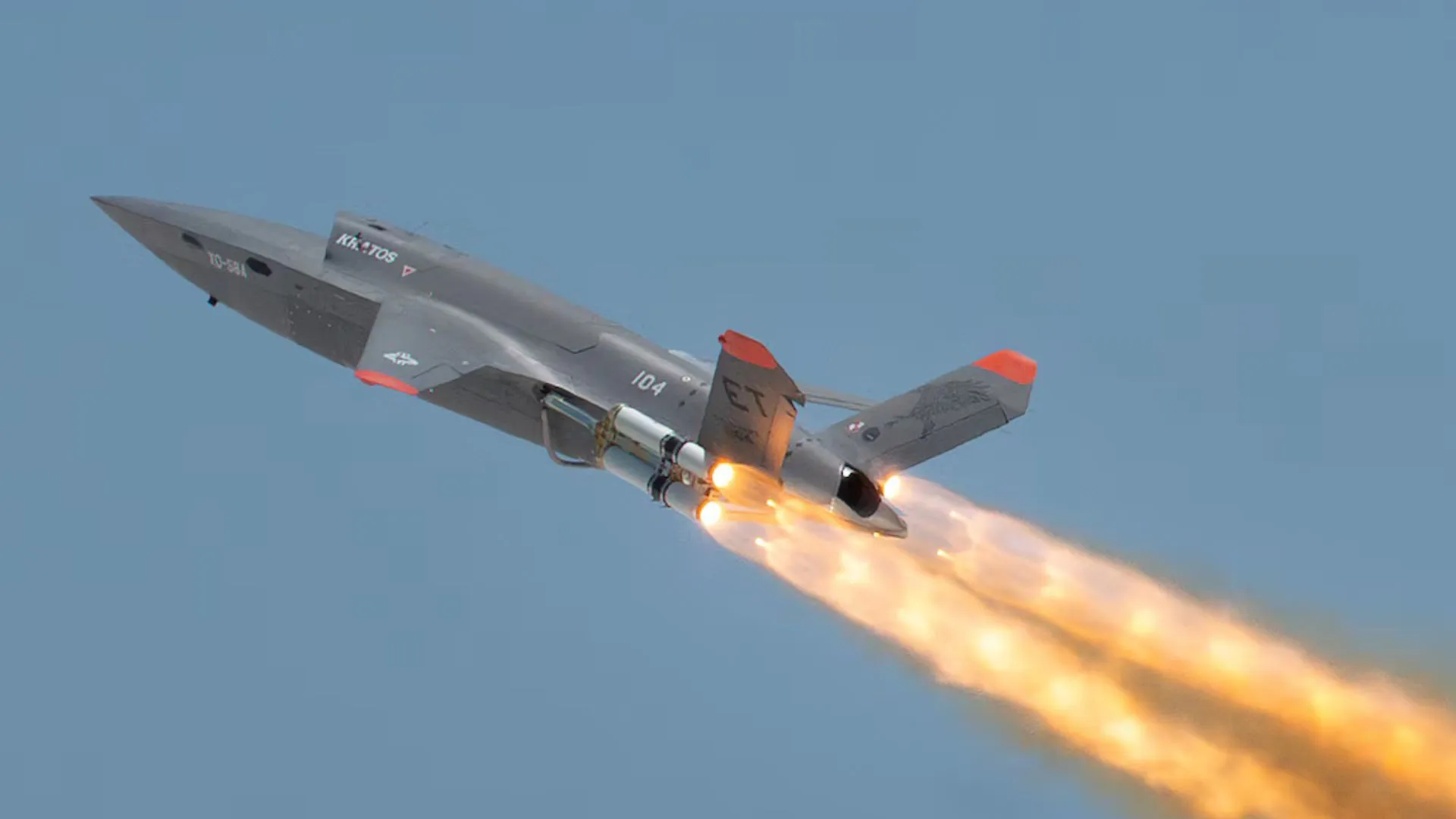
Pilots of the United States Air Force are learning the tricks to fly alongside drones, such as XQ-58 Valkyrie, piloted with the help of artificial intelligence (AI).
The autonomous technology allows the drones to make decisions in a split second and maneuver as per the changing needs. Therefore, the pilots need to train alongside AI-flown drones to gain expertise on how fast the reactions are, and how rough the ride can get.
The AI guiding the drones has already learnt how to fly and is now also learning defensive mechanisms to help them fight in the near future. And the effort has already earned the nickname “Top Gun AI.”
Major Trent McMullen of the US Air Force told CBS News about the experience of learning to fly alongside an XQ-58 drone piloted by AI. He opined that the tasks given to AI-piloted drones might include intercepting enemy aircraft.
Flying alongside the XQ-58 Valkyrie drone
The XQ-58 Valkyrie is a Collaborative Combat Aircraft (CCA)/ Autonomous Collaborative Platform (ACP) designed to operate with Joint and Allied Forces. It is a stealthy, combat UAS developed by Kratos and showcased to the US Air Force as part of the Low-Cost Attritable Strike Demonstrator program.
Valkyrie aims to provide the US warfighters with a high-performance-to-cost, stealthy, highly capable collaborative aircraft. Kratos says it can travel up to 3,000 nautical miles (3,452 miles) and reach a top speed of 0.86 Mach (659 miles per hour). The drone can fly at altitudes of up to 45,000 feet and carry a maximum weight of 6,000 lbs.
The drone system is in production and is flying alongside F-35s, F-22s, F-15EXs, and F-18s from the US Air Force and the US Marine Corps, according to Kratos. The platform can be rapidly built and used in large numbers.
The USAF is already conducting XQ-58 Valkyrie test missions to advance human-machine teaming at the Eglin Air Force base in Florida.
Human-machine teaming by the USAF
General Adrian Spain, head of Air Combat Command, told CBS News that there are plans to operate the AI-piloted drones with manned aircraft.
Earlier in July, the 96th Test Wing’s 40th Flight Test Squadron executed the XQ-58A Valkyrie test with pilots managing ACPs in simulated combat situations. Data from these tests could help inform future development and deploy semi-autonomous capabilities across the forces.
The USAF had also reached a milestone in automating the F-16 fighter jet to fly the “Viper” without a pilot. The service was going to induct six jets for these AI-enabled F-16s, paving the way for the CCA effort.
The USAF had announced in April that three of the six F-16s are undergoing the VENOM modification process, with new upgrades involving software, hardware, and instrumentation, eventually allowing the aircraft to fly autonomously.
As the F-16 VENOM takes shape, the Air Force is also testing its autonomy in real-time modeling and combat simulation environments. When the aircraft starts actual flight testing, a test pilot will be on board to oversee the flight and can start and stop the autonomy in real time.
The hardware tests will check how well pilots can handle aggressive aircraft maneuvers while staying within their physical and health safety limits. The program aims to ensure that within 18 months of the first F-16s arriving, a fully modified aircraft will be ready for testing.
The officials of the USAF stressed that giving full autonomy to the aircraft or drone wouldn’t be a feasible solution right now, and it would still rely on human instructions. However, the option of having an uncrewed aircraft or drone for missions and intercepting enemy jets is too good an opportunity to miss.